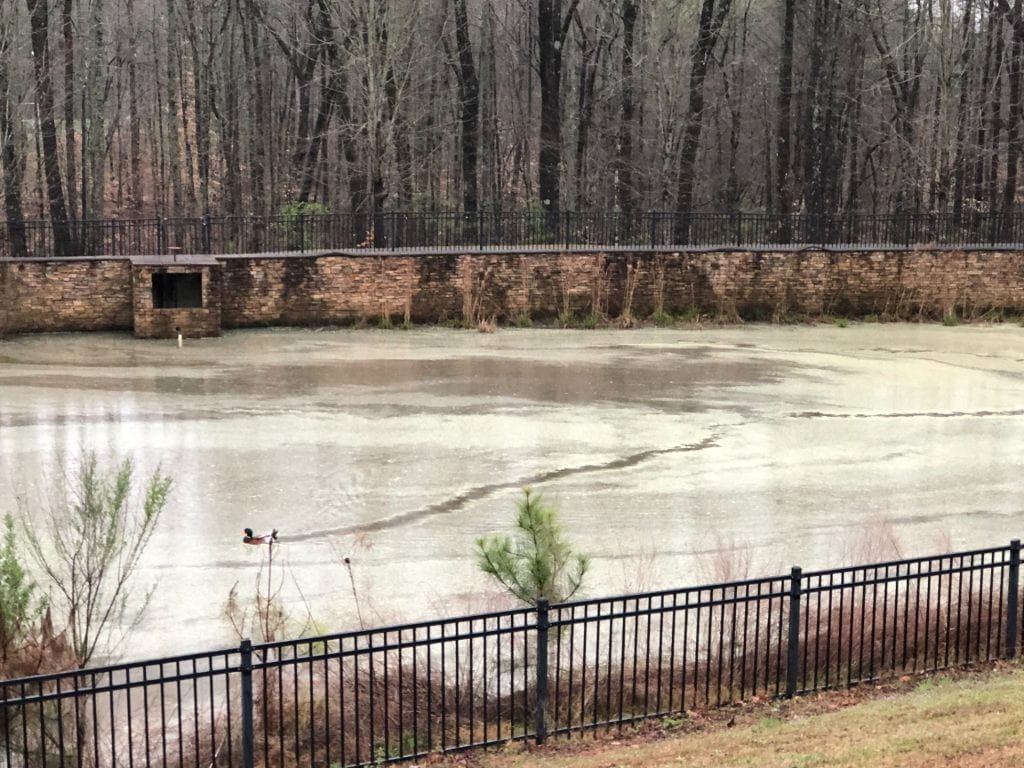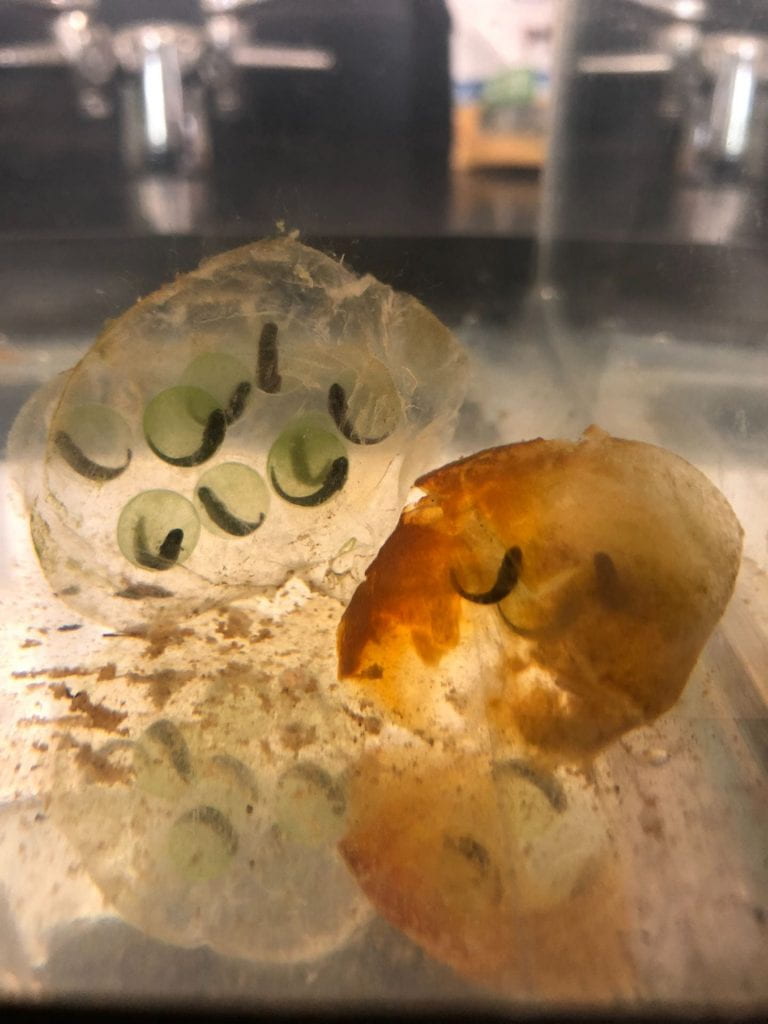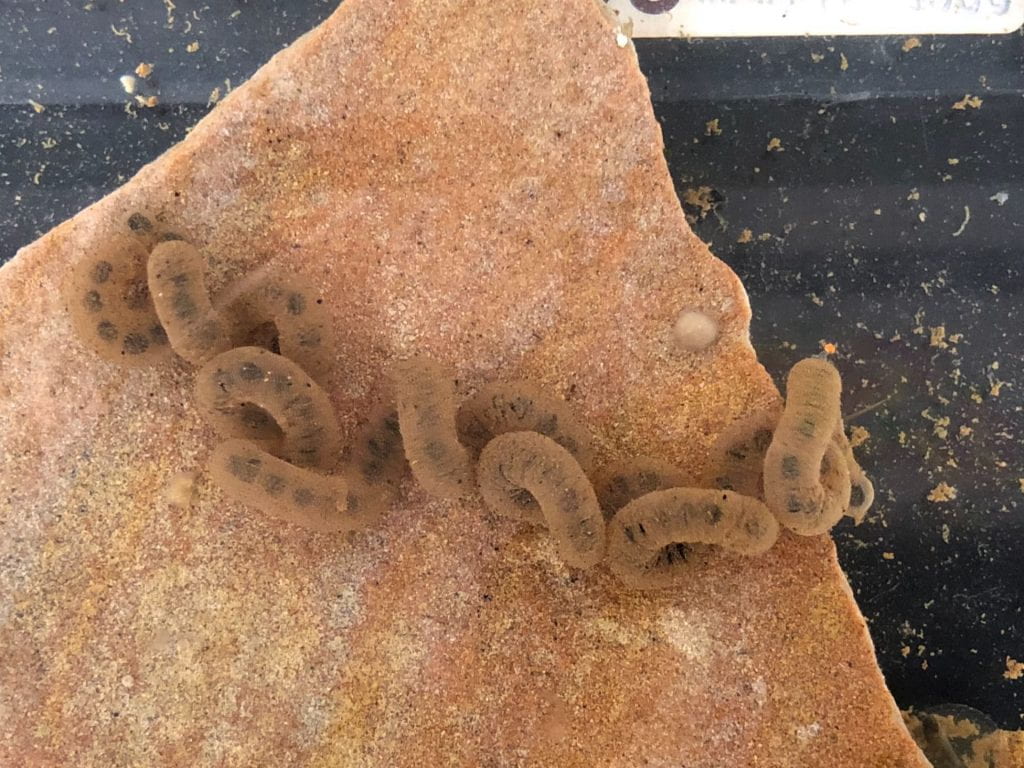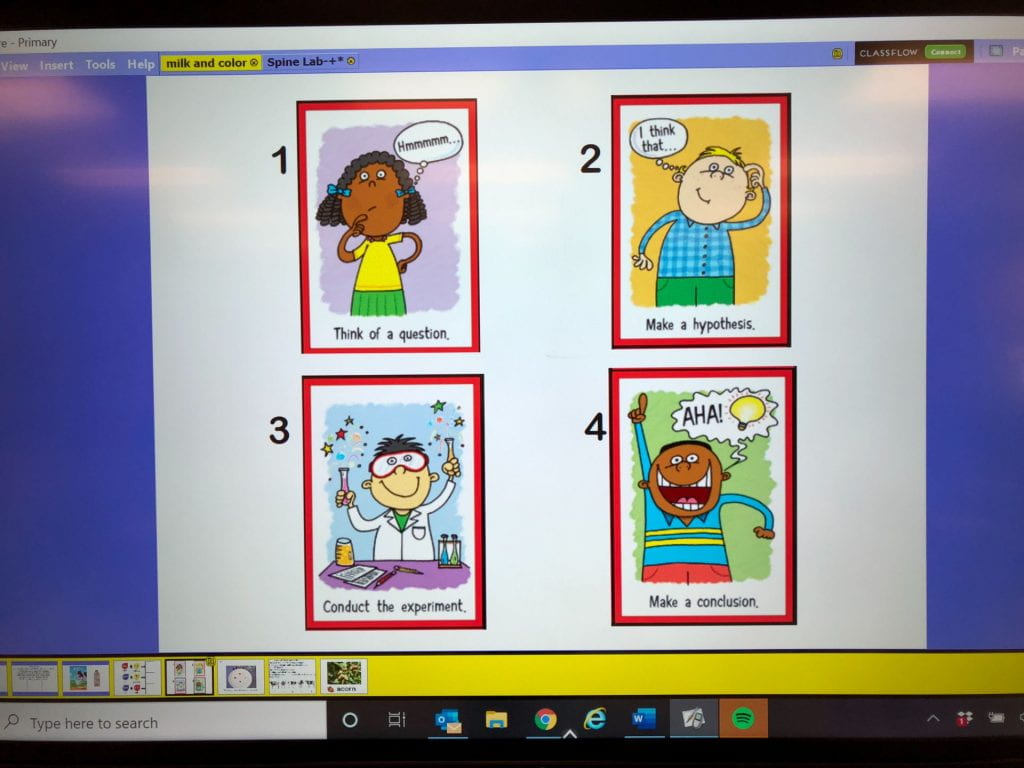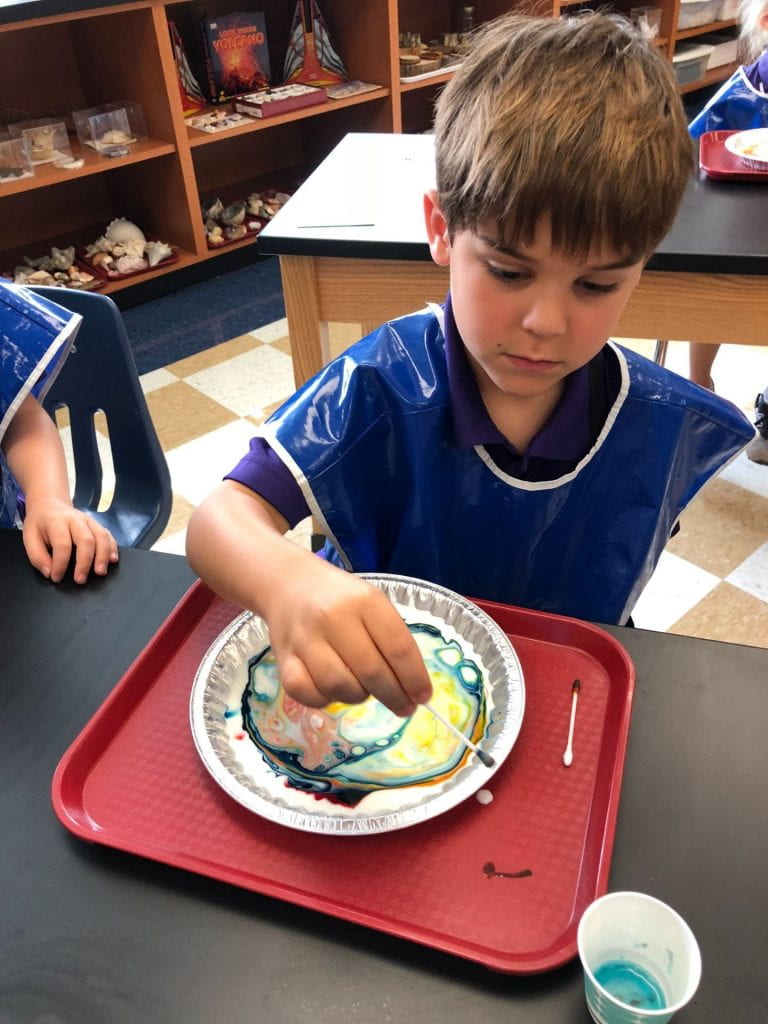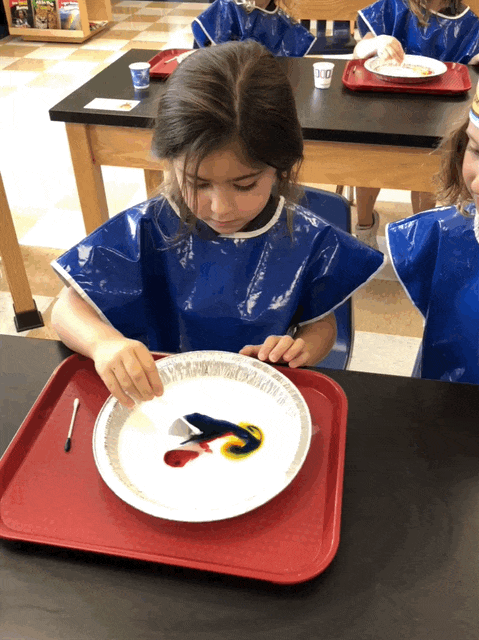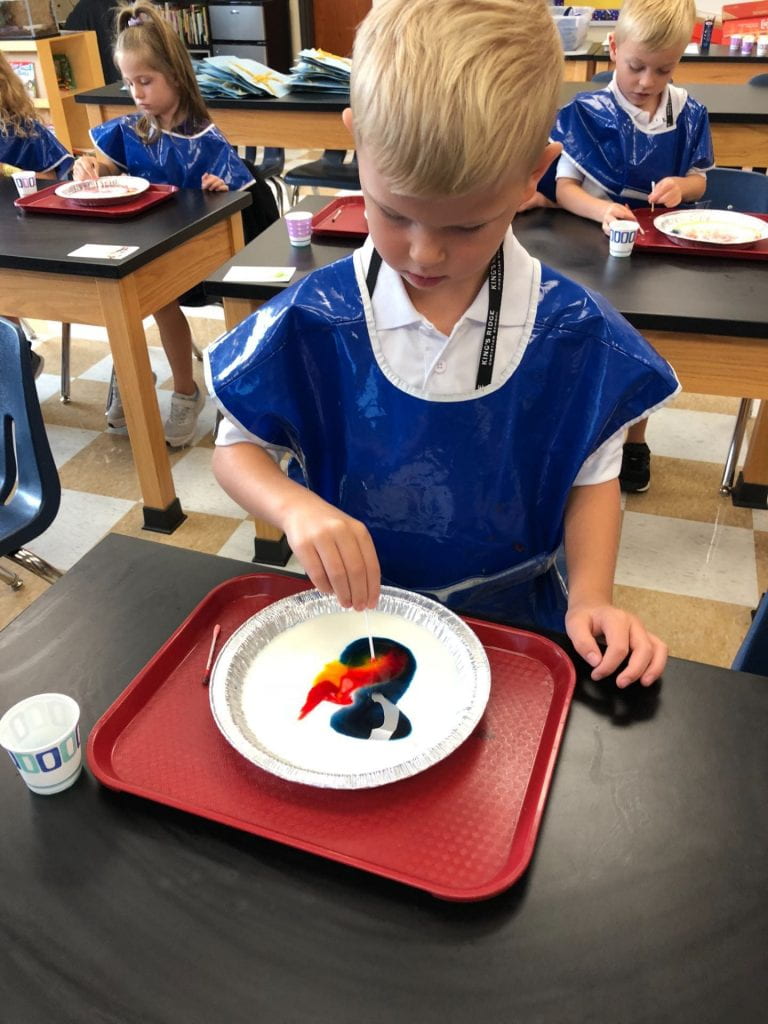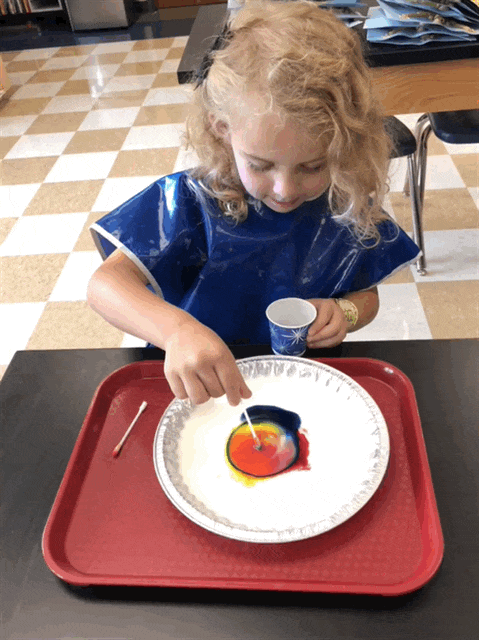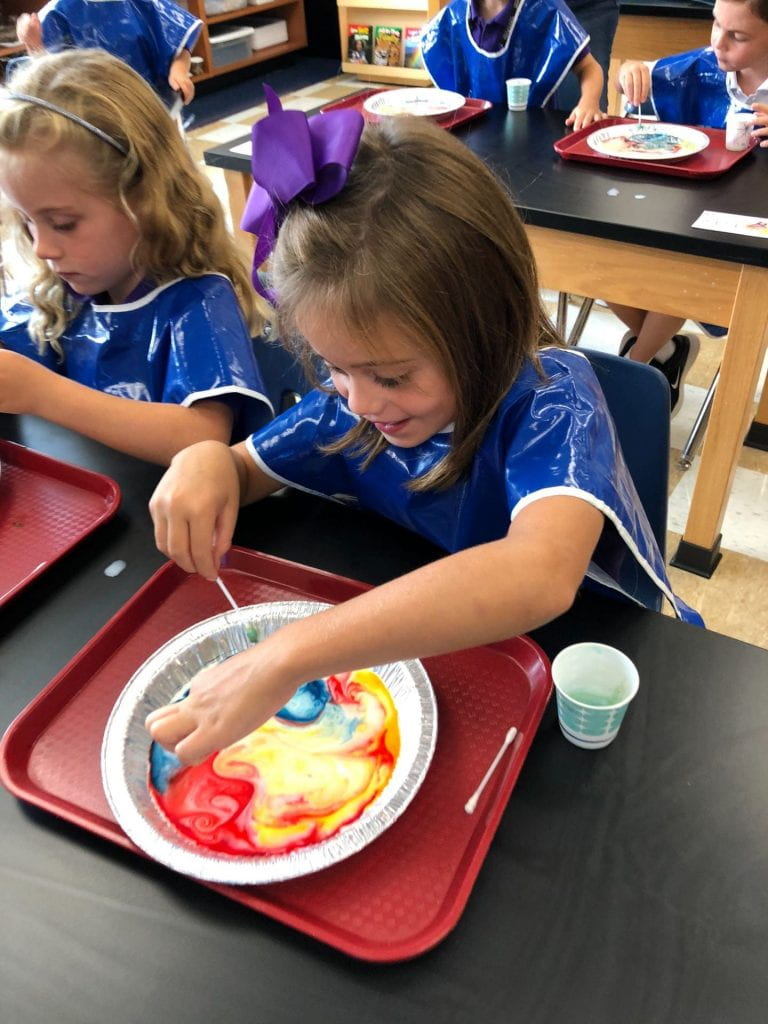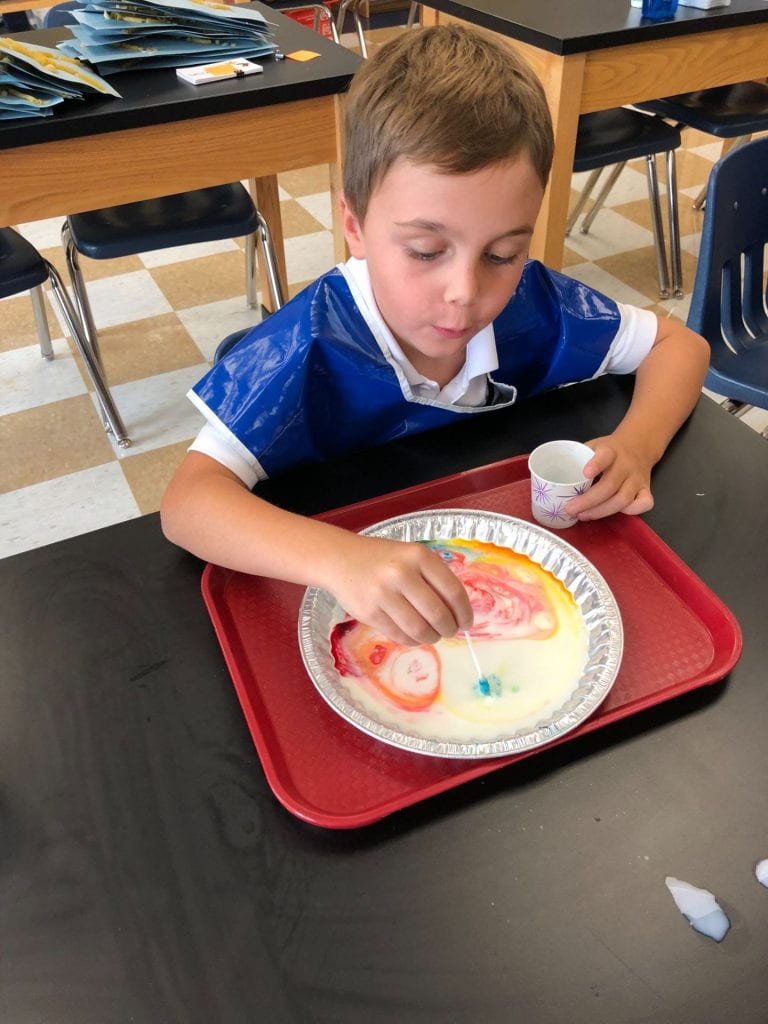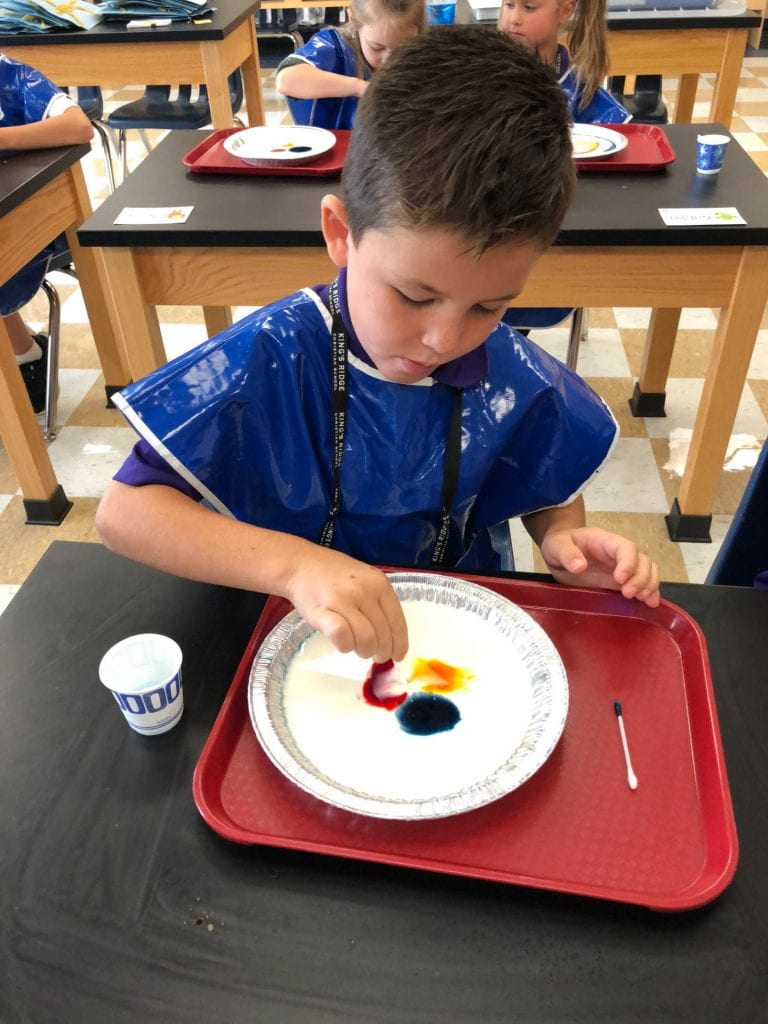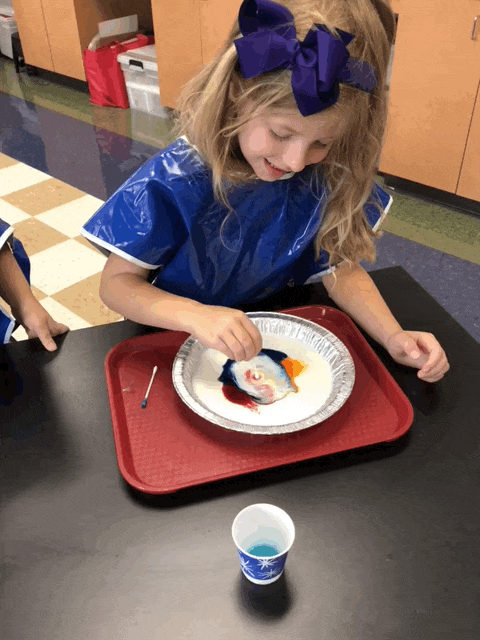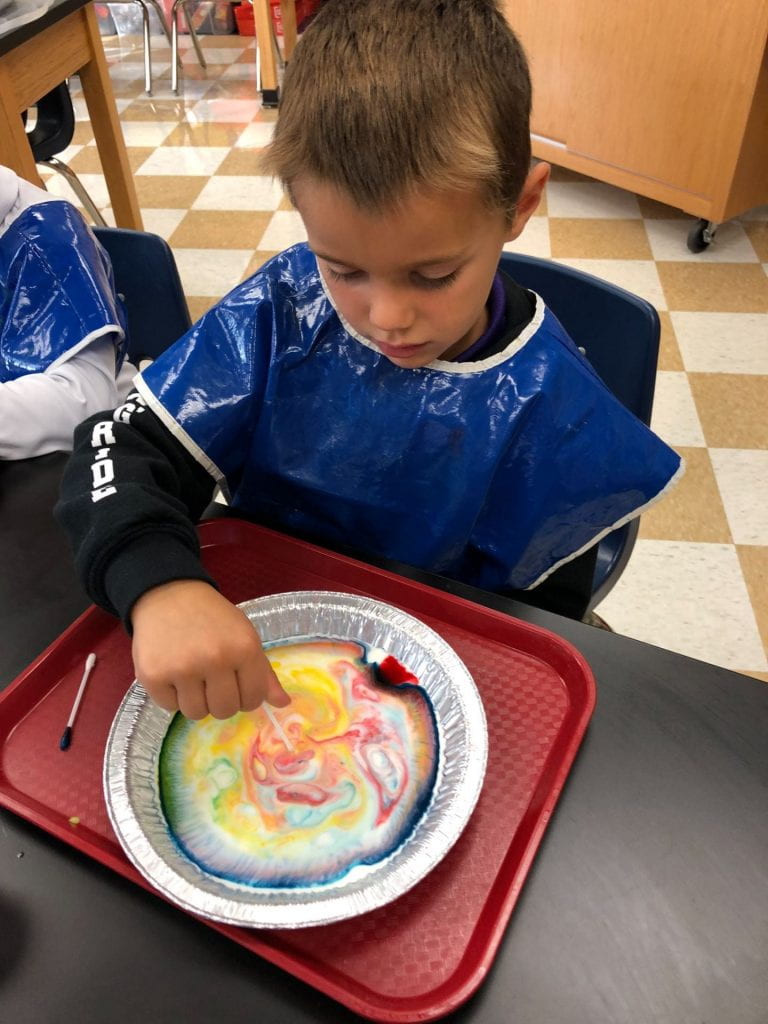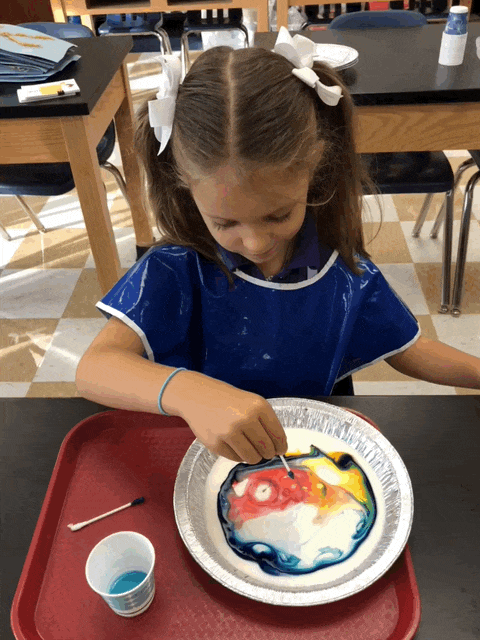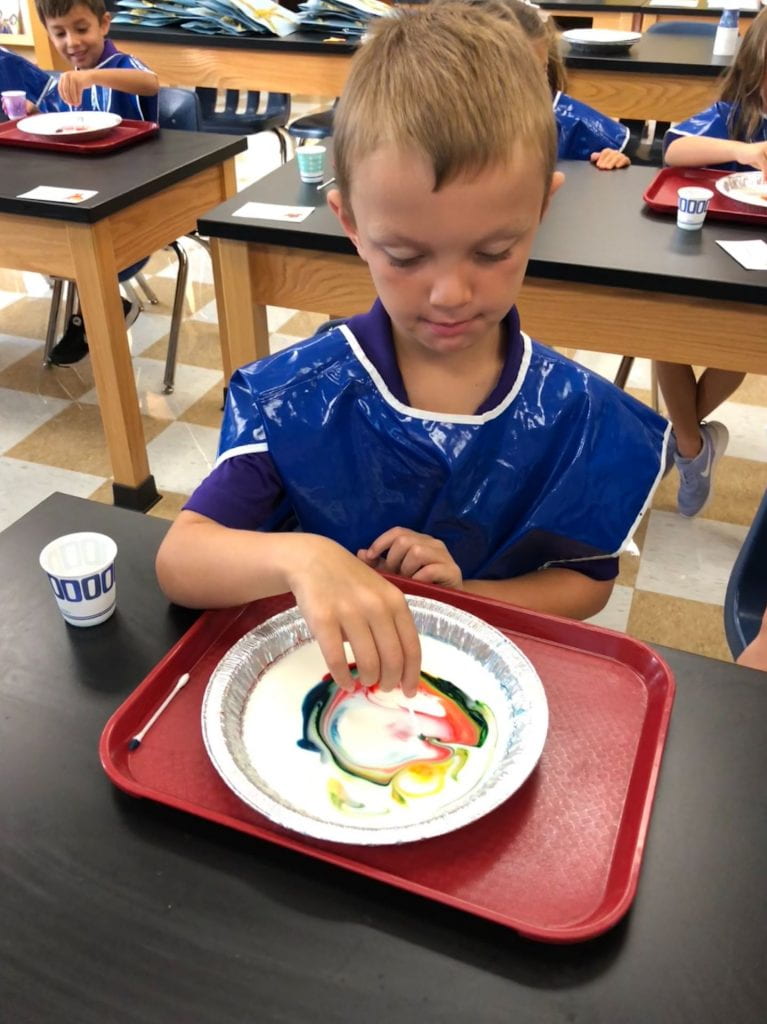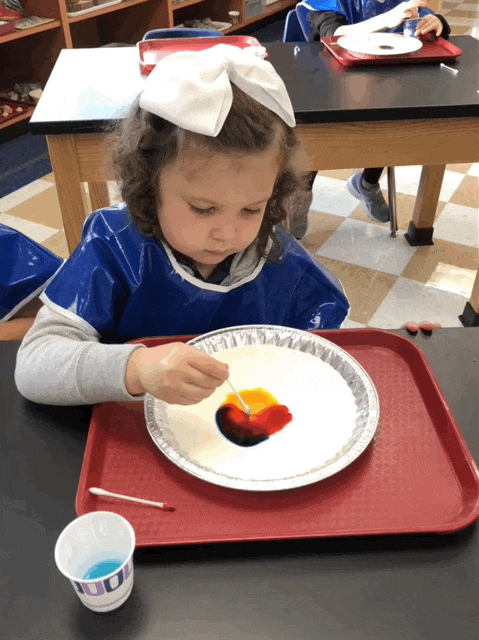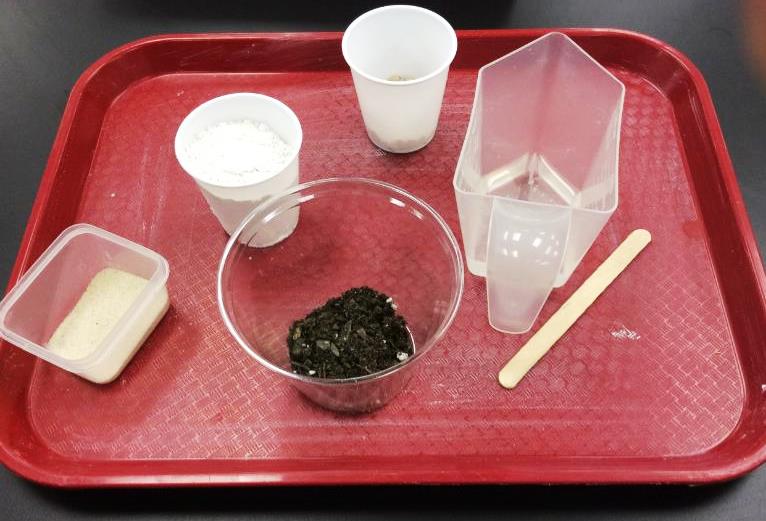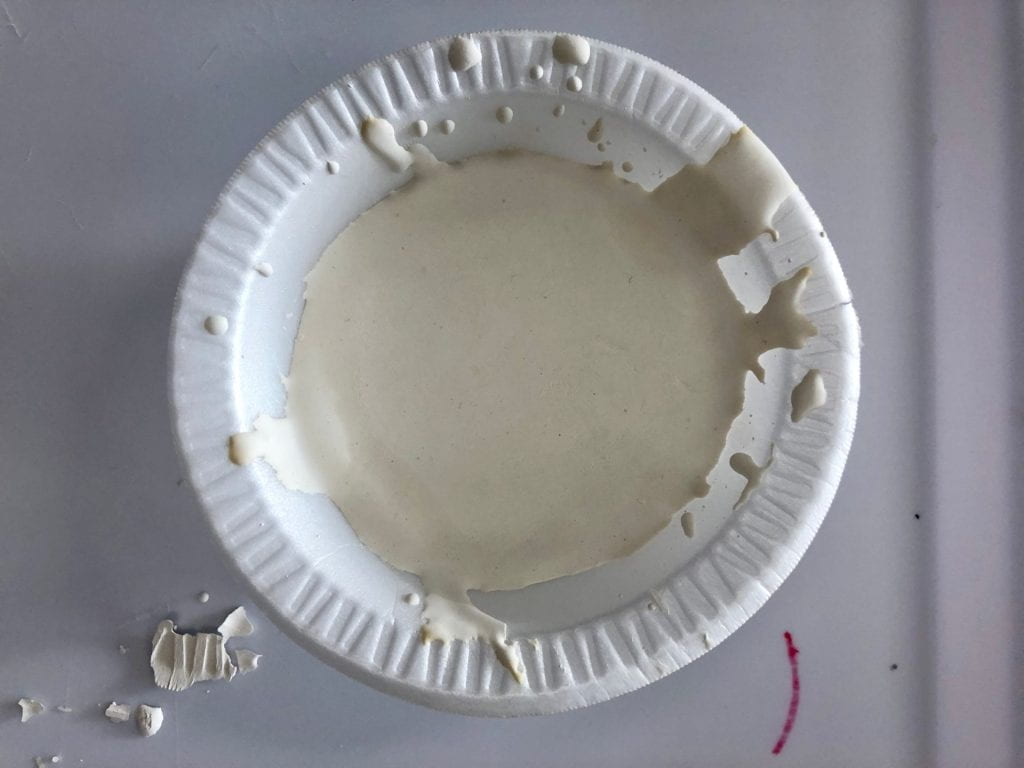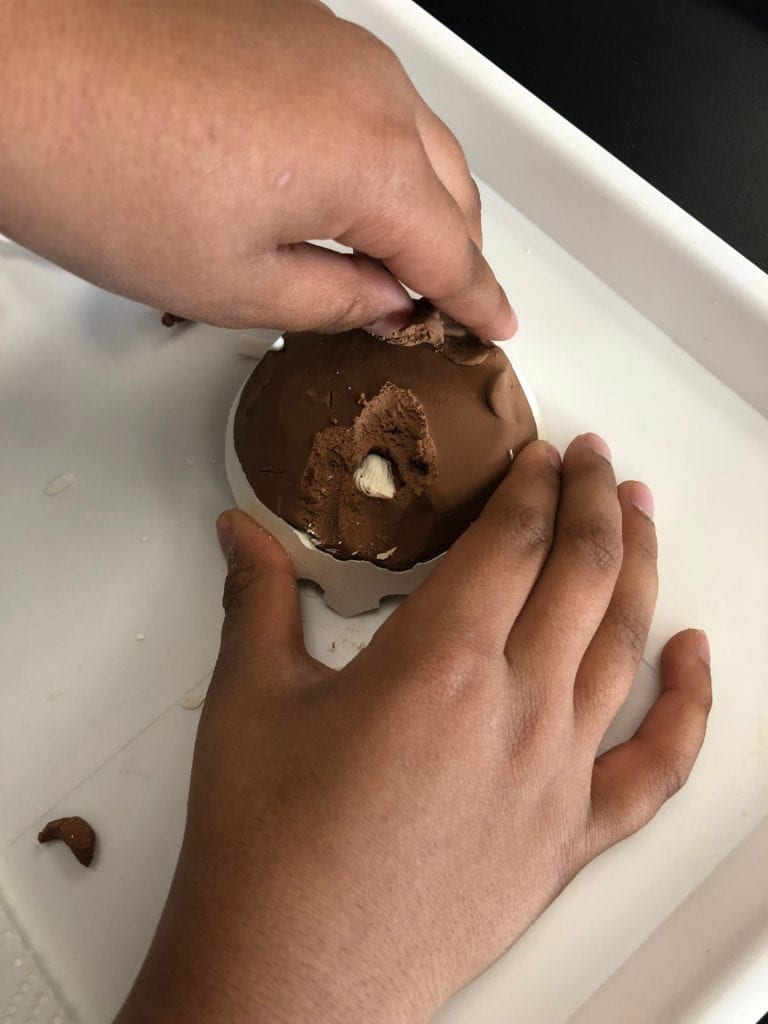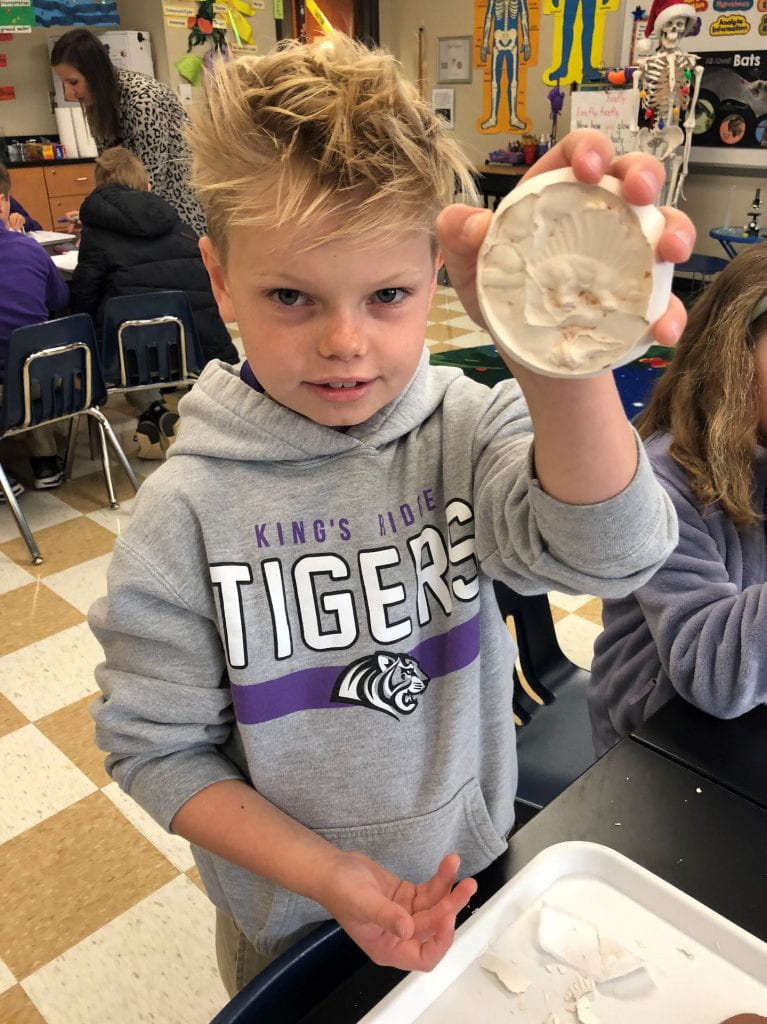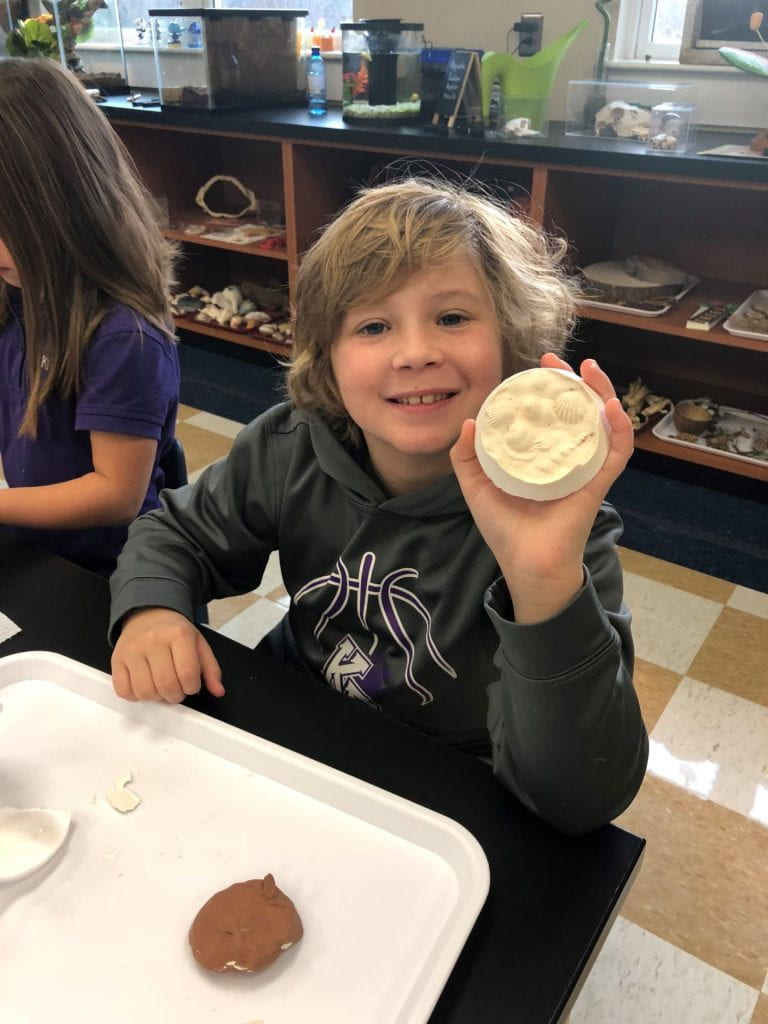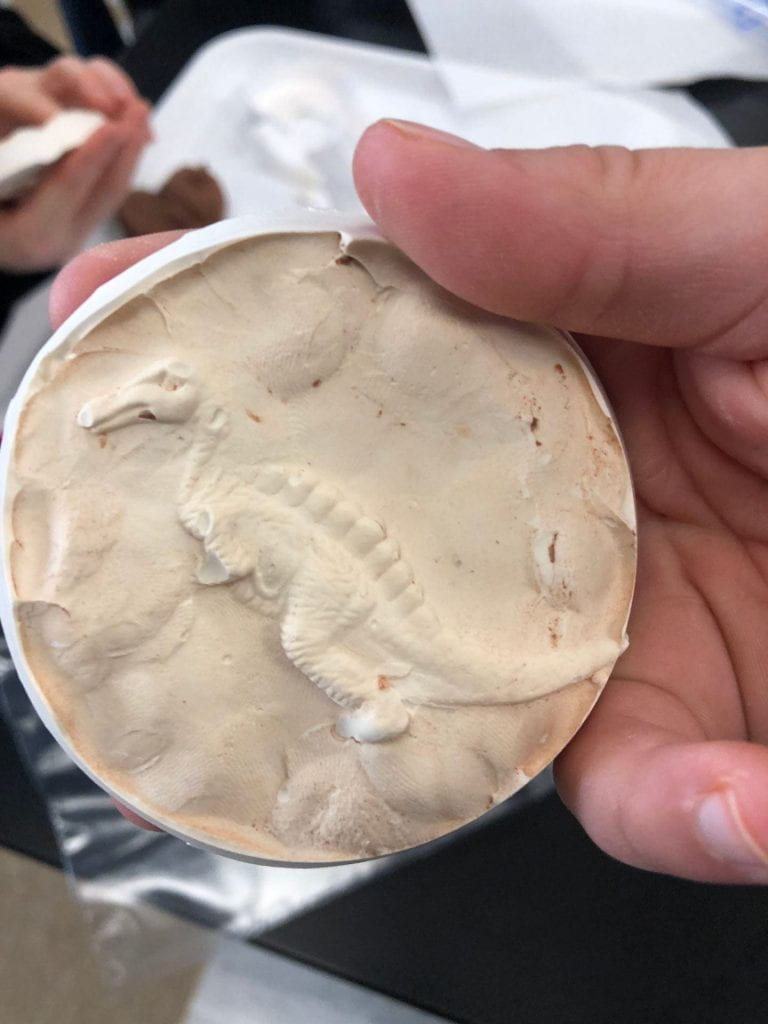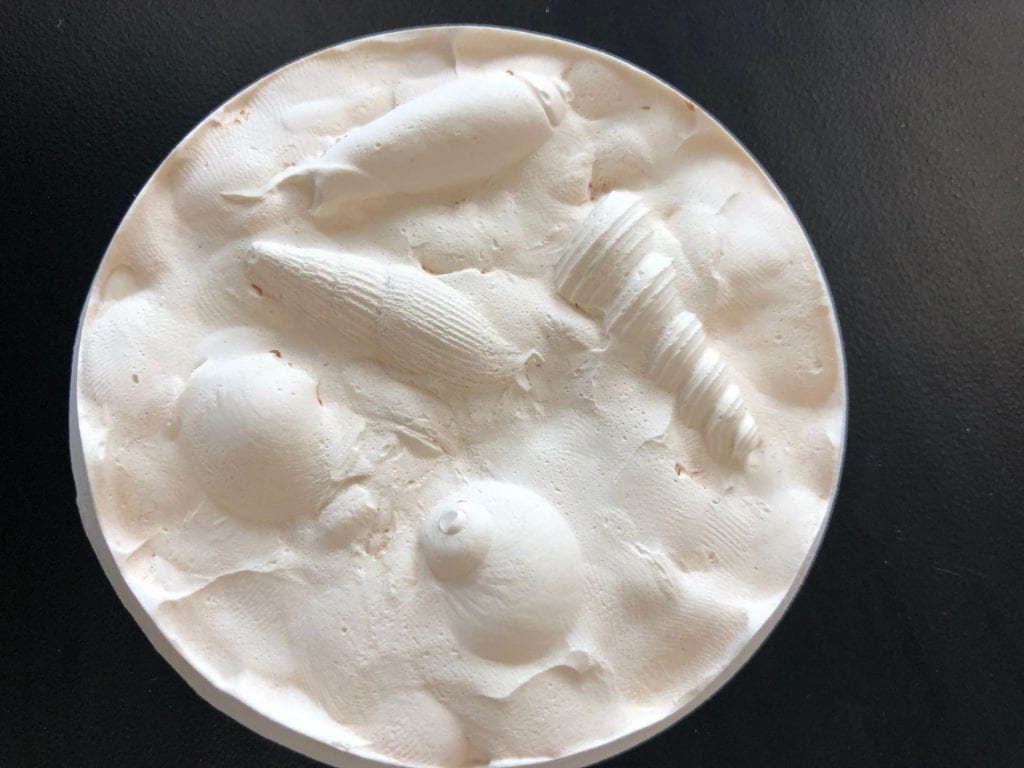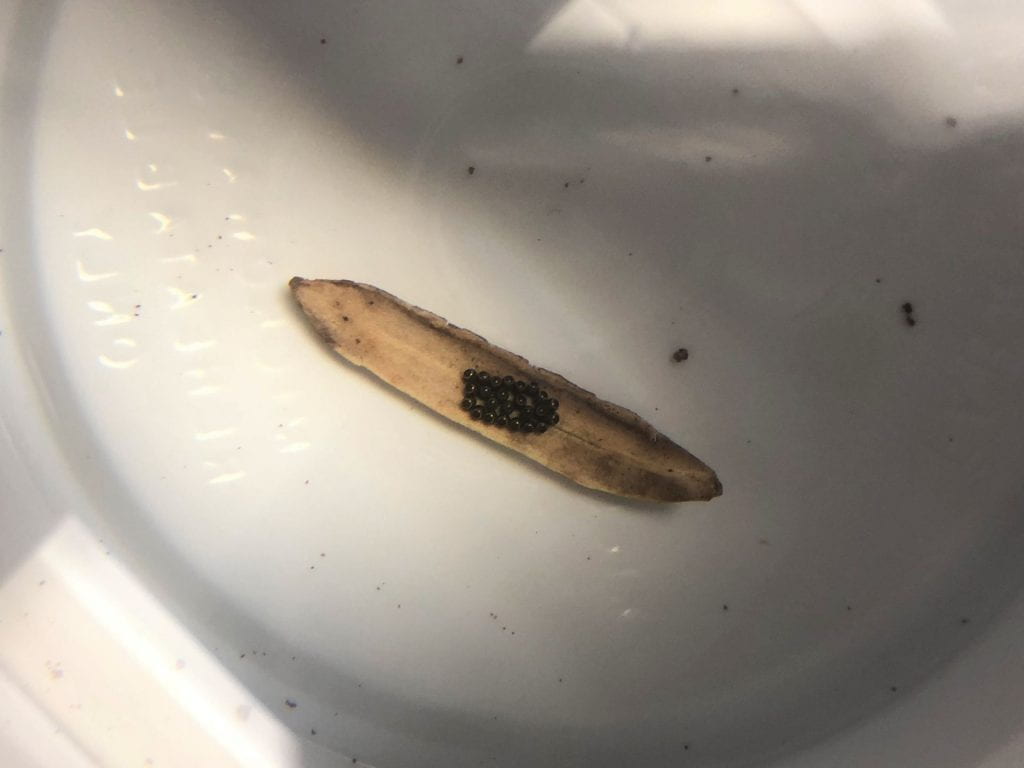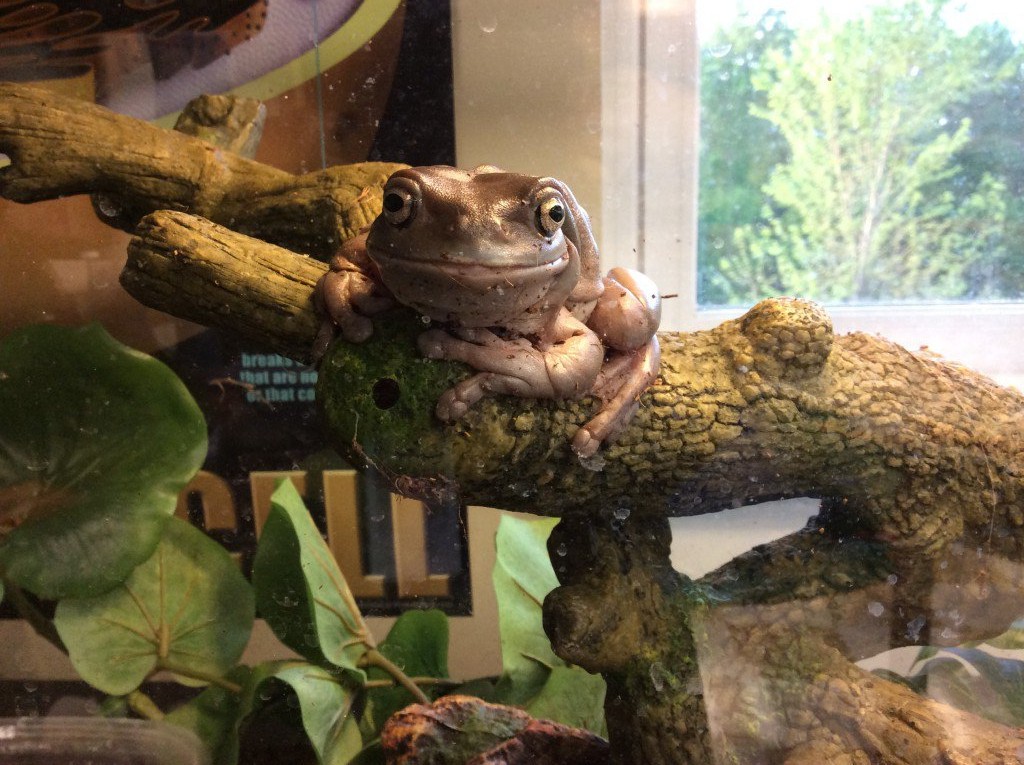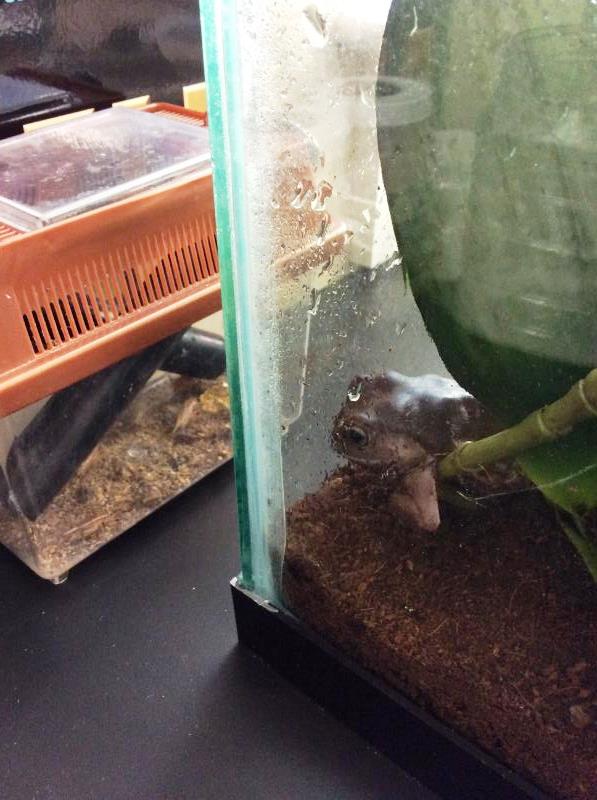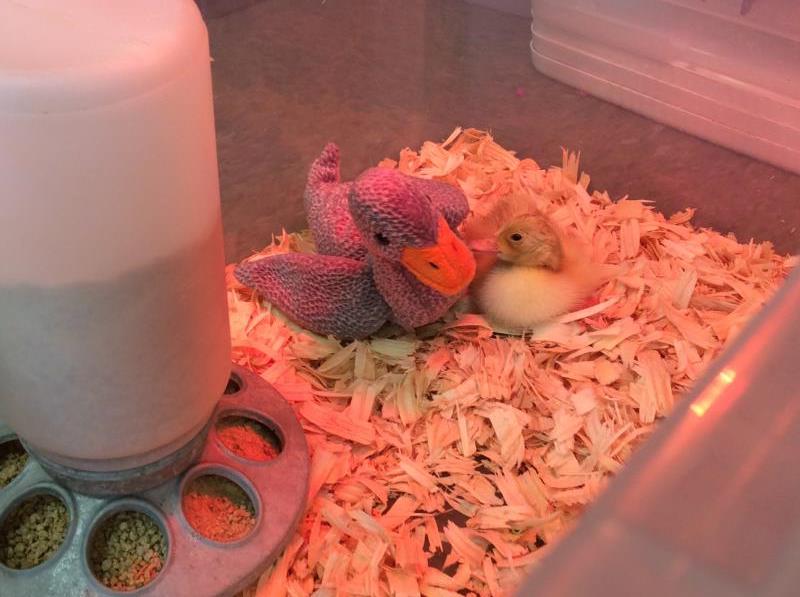Updated Tadpole Post
Color Changing Milk Investigation
Kindergarten scientists are learning about the Scientific Method.
I dropped red, yellow, and blue food coloring into pie plates filled with whole milk, and the colors didn’t move when my scientists placed a Q-tip in the center of the colors. Then, they dipped another Q-tip into dishwashing soap, placed it between the colors in the pan, and watched the colors explode! Why did that happen? How did we make green, purple, and orange?
Click here to learn more about this experiment. Try this at home!
When we cleaned up, we discovered that primary colors mixed together make brown.
Sedimentary Rocks and Fossils
Sedimentary rocks are created from particles of sediment that accumulate in layers over a long period of time and harden into rock. They are often found near water and may contain fossils. I made a sedimentary rock by acting out a story about rain picking up sediments, soil, pebbles, shells, sand, and a small turtle as the water traveled across land. We pretended thousands of years passed and the sediments hardened into a rock. These resemble the conglomerate rocks we have in our rock boxes.
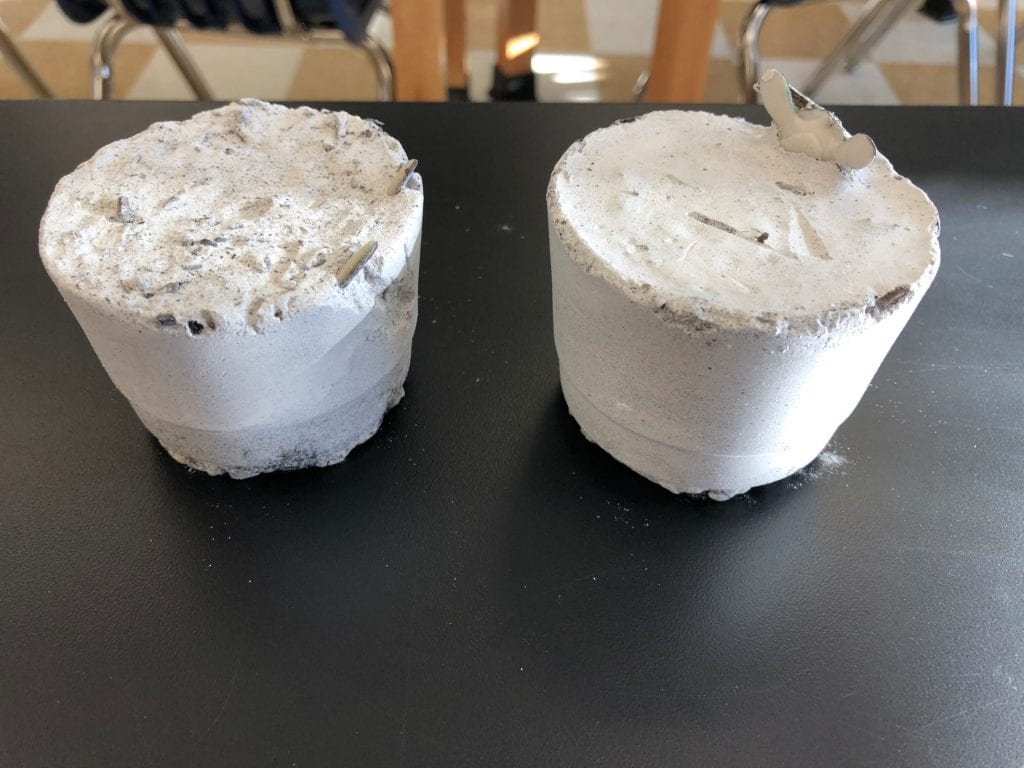
I found the following sedimentary rocks with these fossils when I was a child.
Before the holiday break, third grade scientists pressed shells or dinosaurs into clay at the bottom of a pond (bowl). Then we poured sediments on top of the impression and allowed it to harden. Today, we were paleontologists and excavated our fossils.
Eggs
Water Cycle Song
Fourth grade scientists learned a song to help them remember the water cycle. To hear them sing, click here.
